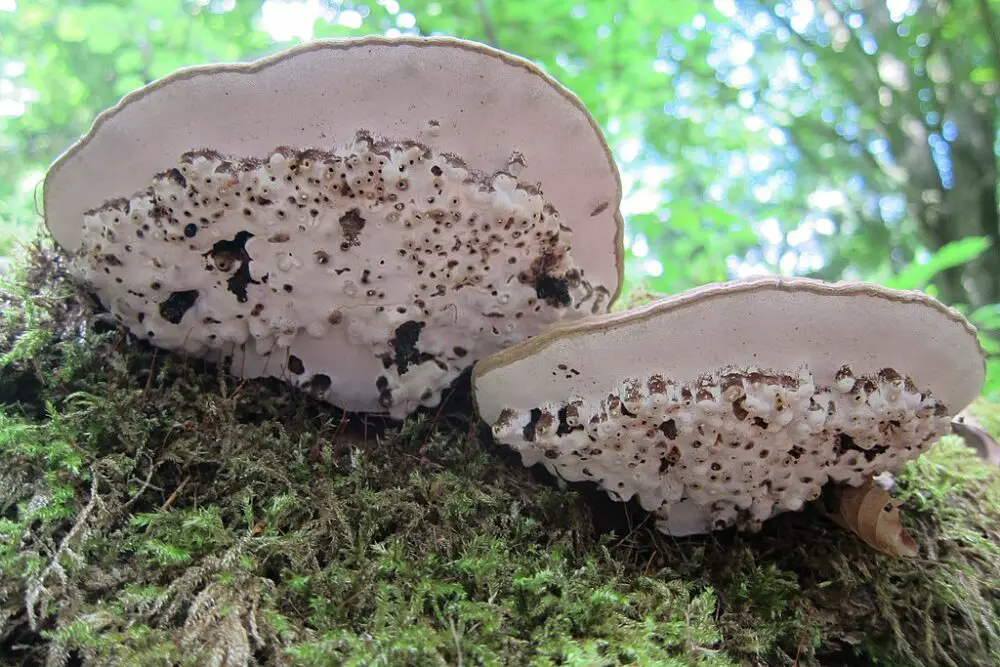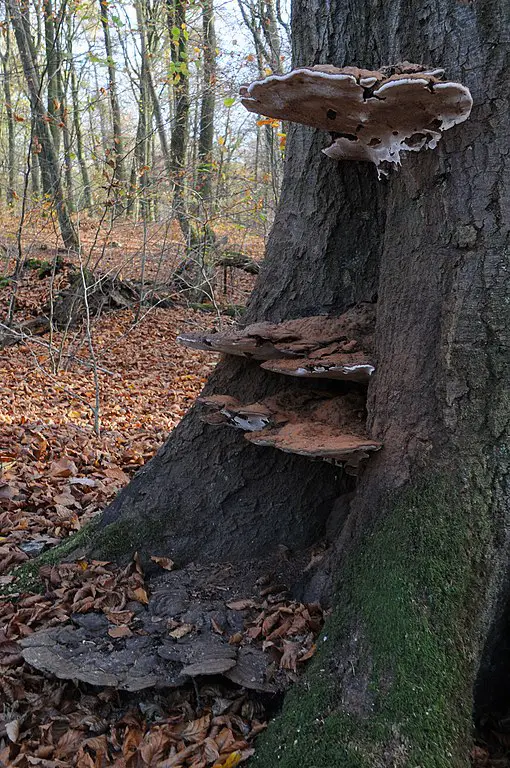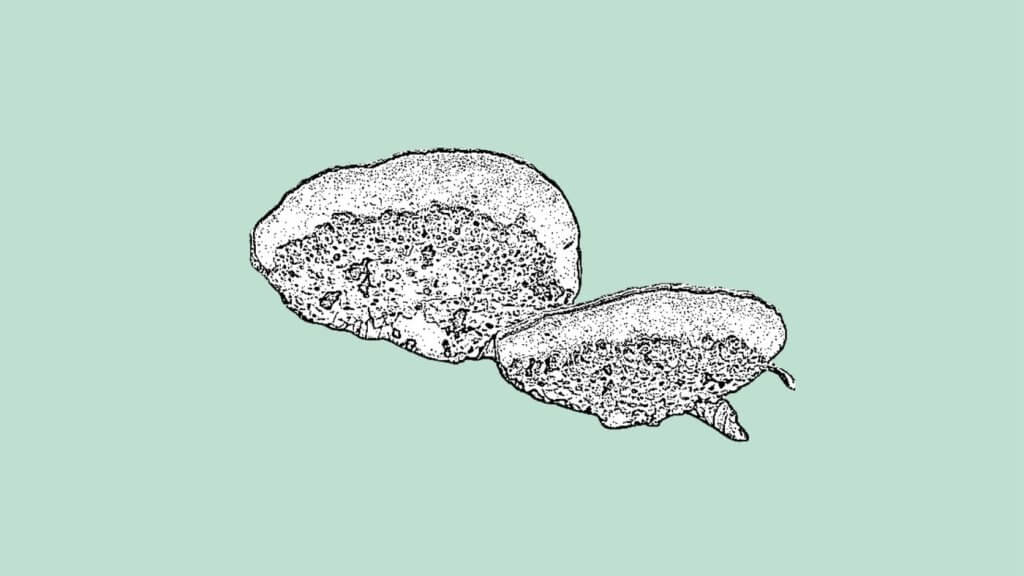Ganoderma applanatum is a widely distributed white rot fungus found on both living and dead trees and is considered inedible in its natural state. The plant produces a perennial conk or fruiting, primarily used for artistic purposes. Artists can create beautiful sketches without using a pen, pencil, or paint by lightly scratching the surface of the pores.
Ganoderma applanatum (artist’s conk) profile
| Scientific name | Ganoderma applanatum |
| Family | Ganodermataceae |
| Kingdom | Fungi |
| Genus | Ganoderma |
| Phylum | Basidiomycota |
| Spore print | Brown spores to orangish/reddish brown |
Common names include:
- artist’s bracket
- artist’s conk
- artist’s fungus
- bear bread
In most North American field guides, this species is identified as Ganoderma applanatum, but in western North America, it is generally referred to as Ganoderma brownii. There is no difference in appearance.
Why is it called artist’s conk/artist’s bracket?
Artist’s conk is named after the natural canvas on the underside of the fruiting body. When handled, this large, woody bracket fungus stains brown due to its mostly flat white pore surface.
What Are You Foraging For Right Now?
We're thrilled to hear your ideas. What would you like to submit today? Feel free to share your thoughts and experiences with us.
As a result, the mushroom is an ideal medium for artists. By etching into this surface, the brown bruising contrasts sharply with the white color of the rest of the body, allowing you to create beautiful, natural drawings.
Can you eat Ganoderma applanatum?
Even though Ganoderma applanatum is edible, its woody and hard flesh make it difficult to consume.
It is commonly used to make fungal tea and tinctures and to make fire when camping.
Where is Ganoderma applanatum found?
This is a very common fungus widespread throughout North America and the world, but it is primarily found in temperate and tropical regions.
Ganoderma applanatum grows on hardwood and deciduous trees in clusters or individually.
As parasites, Ganoderma species are saprobic on wood of hardwoods and conifers and are very picky about their substrates, rarely crossing the hardwood/conifer line and sometimes limiting themselves to a few species.
How to identify artist’s conks
Conks of Ganoderma applanatum are fan-shaped polypore mushrooms that grow from dead logs in something akin to a shelf.
Conks produced by G. applanatum can reach a diameter of 29 inches, although average specimens are much smaller.
G. applanatum forms perennial fruiting bodies, which allow the conks to grow larger and larger each year. By cutting the mushroom in half and counting the layers of pores, you can determine the age of the mushroom.
Despite its large size, Ganoderma applanatum has a rather unimpressive appearance. The pileus surface is usually flat, matte brown, lumpy, and zonate.

Underneath, the mushroom is smooth, bright white, and contains tiny pores (four to six per 0.03 inch).
G. applanatum is typically thicker in the middle and thinner on the sides, resulting in a somewhat curved lower surface.
The most exciting feature of the mushroom is that the upper surface of the pores instantly turns brown when touched.

What else is Ganoderma applanatum used for?
Apart from its uses as a canvas for artists, this fungi has many reported medicinal uses that cannot be ignored. Artist’s conk has a long history of use in traditional medical systems, with no attested side effects.
A staple of Eastern/Asian medicine for quite some time, it is used to treat insomnia, anorexia, muscle issues, and other conditions.
Listed below are some of the unique benefits of this medicinal mushroom.
1. A Boosted Immune System
The Ganoderma applanatum has an important effect on the immune system. Although research is still in progress, studies have shown that the fungus can affect the genes in white blood cells.
Moreover, the fungus may improve the function of lymphocytes responsible for fighting infection.
2. Protection Against Mental Health Issues
Many experts agree that this mushroom helps reduce depression and fatigue and improves the quality of life.
A study on neurasthenia, which includes symptoms such as dizziness and irritability, found that this mushroom effectively reduced fatigue and improved wellbeing within eight weeks.
3. Blood Sugar Control
According to various studies, the Ganoderma mushroom contains molecules that may reduce blood sugar levels.
There is, however, a need for further research in this area.
4. Antioxidant properties
When used as a tea, the A. applanatum has been found to have antioxidant properties. One study found that the fungus has an extract that exerts a positive effect on the level of phenolic-type antioxidants.
How to make Ganoderma applanatum tea
Ingredients:
- Dried mushrooms – 3-4 grams
- Water – 4 cups
Instructions:
- Bring the water to a boil (don’t use aluminum, use a ceramic pot)
- Add the mushroom
- Reduce the heat until the water is simmering, not outright boiling
- Let it simmer for 2 hours
- Remove from the heat, strain, and set aside
- You can repeat the process with the strained mixture until the resulting concotion is no longer bitter or colored
Ana has always been interested in all things nature and flora. With her expertise in home gardening and interest in foraging, she has been spending her weekends and free time looking for edible native plants, flowers, and fungi. One of her many hobbies includes testing new savory and sweet recipes, juices or teas made from freshly picked plants, wild fruits, or mushrooms.

